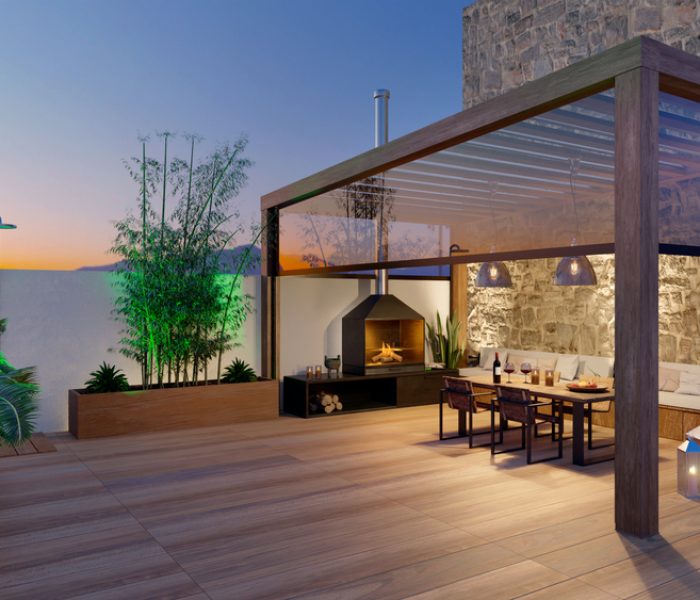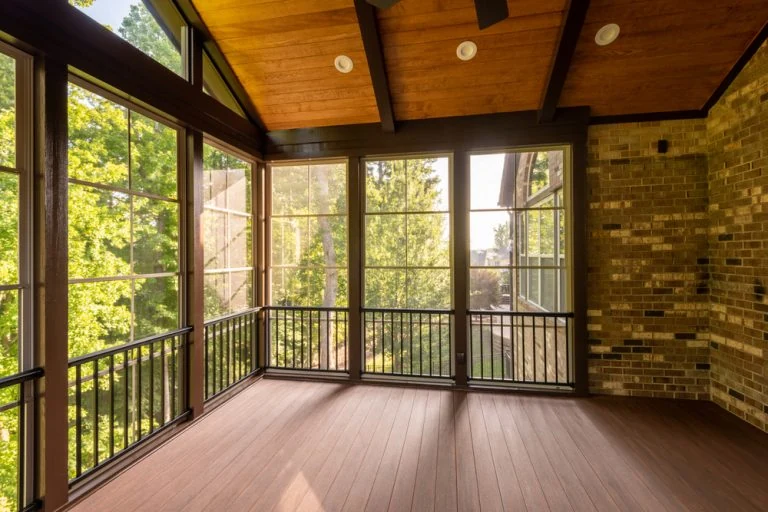
Liferoom in Stony Brook, NY
Provider of Premium Sunrooms, Addition Solutions, Pergolas, LifeRoom, LifeRoom Louvered Systems, and more for all residents in Nassau County!
Get a free estimate
Awards
With our many years of experience we have earned many home remodeling awards we take pride in.




Client Testimonials
striving for great experiences

Read More
I had an exceptional experience with Four Seasons Sunrooms. They were customer satisfaction oriented and their prices were by far the most reasonable. They came out to assess my needs right away, and I had received great design advice and prompt appointments.

Read More
They are professional and friendly people who took the time to explain how the steps leading up to the completion of the sunroom and kept up with communication along the way. I would highly recommend them to any of my friends and family!

Read More
We love our new sunroom! Four Seasons worked with us to get all the necessary permits and town hearings to move forward. The workers were hard working and courteous, in very cold weather! We are enjoying our new beautiful living space.

Read More
Their products are beautiful, plus there's so many sunroom styles to choose from. I'm really impressed by the impeccable work they've done. In addition, their staff members are super friendly!
Previous
Next
The Incredible Benefits of Adding a LifeRoom to Your Home in Stony Brook, NY
What is a LifeRoom?
In recent years, LifeRooms have emerged as a leading trend in home enhancements in Stony Brook, NY. But what exactly is a LifeRoom? Simply put, it’s a unique, hybrid space that blends the comforts of an indoor living room with the refreshing openness of an outdoor patio. It offers homeowners in Suffolk County a chance to expand their living space, entertain guests in style, or relax in a serene environment.
With the expertise of Four Seasons Sunroom, installing a LifeRoom has never been easier. We pride ourselves in delivering quality, which means when you trust us with your LifeRoom project, you’re guaranteed a top-notch finish every time.


Top 3 Benefits of Having a LifeRoom in Stony Brook, NY
Maximized Living Space: Especially in Stony Brook, homeowners often seek ways to make the most of their living areas. A LifeRoom not only adds to your home’s square footage but does so in the most delightful manner possible. Imagine hosting dinner parties under the stars or enjoying a lazy Sunday afternoon without leaving the comfort of your home!
Increased Property Value: In the competitive Suffolk County real estate market, properties with unique features like LifeRooms tend to fetch higher prices. With the Four Seasons Sunroom touch, your LifeRoom will be more than just an addition; it will be a luxurious extension of your home, making it a lucrative selling point.
Year-Round Comfort: One of the standout features of LifeRooms is their adaptability. Rain or shine, summer or winter, residents of Stony Brook can enjoy a versatile space tailored to the conditions. With our assistance at Four Seasons Sunroom, we ensure that every LifeRoom we install comes equipped with features like climate control, making it a haven throughout the year.
As Four Seasons Sunroom has served many satisfied homeowners in Suffolk County, we’ve seen first-hand how a LifeRoom can change the dynamics of a home. So, if you’re in Stony Brook, NY, and considering a LifeRoom, give us a call at 516-253-2329. Our team is always here to guide and assist you.
Why Choose Four Seasons Sunroom for Your LifeRoom Installation?
Selecting the right company for your LifeRoom installation in Stony Brook, NY is crucial. Here’s why Four Seasons Sunroom stands out:
Expertise and Experience: Serving Suffolk County for years, our wealth of experience ensures we understand the unique needs and preferences of homeowners in Stony Brook.
Quality Materials: We believe that the quality of a LifeRoom isn’t just about craftsmanship, but also about the materials used. That’s why we source only the best for our clients.
Personalized Service: At Four Seasons Sunroom, our relationship with clients is of utmost importance. We listen, advise, and create spaces that truly resonate with your vision.
Warranty and Support: We don’t just leave once the installation is done. Our team is committed to providing post-installation support. Plus, our LifeRooms come with an assured warranty.
For a seamless LifeRoom installation experience in Stony Brook, NY, trust none other than Four Seasons Sunroom. Ready to make the move? Reach out to us today at 516-253-2329, and let’s transform your living space together.

Call Us Today!!
Stony Brook was first settled in the late 17th century. It was originally known by the native name Wopowog and then as Stony Brook, with both names likely referring to the interconnected bodies of water at the hamlet’s western edge. It began as a satellite community of adjacent Setauket, New York, the Town of Brookhaven’s first settlement, and its land was included in the initial 1655 purchase from the native Setalcott tribe.
The Three Village Inn, housed in the c. Richard Hallock homeA gristmill was built in 1699 on the water body now known as the Mill Pond. The current structure, which replaced the original in 1751, ground grain into the 1940s and has since been repurposed for public tours. For religious services and education, the hamlet’s original residents had to attend institutions in the neighboring communities of Setauket and St. James. In the latter half of the 18th century, activity began to shift from the mill area north toward the harbor as new residences, a number of which still stand, were constructed.
Stony Brook was a remote area through the 18th century aside for a modest amount of commerce near the mill at the intersection of Main Street and Harbor Road. The community’s development was stalled by its poorly accessible harbor relative to nearby Setauket and Port Jefferson. In the 1840s, local painter William Sidney Mount led a call for the harbor’s dredging. This was completed twice, but after the harbor filled in both times the effort was abandoned. Lacking the resources of its neighboring harbor settlements, Stony Brook based its economy on agriculture and the cordwood industry.
Learn more about Stony Brook.Useful links for Stony Brook, NY
Additional Links
Here are some general contractor-related links:
Albertson
Atlantic Beach
Baldwin
Baldwin Harbor
Barnum Island
Baxter Estates
Bay Park
Bayville
Bellerose
Bellerose Terrace
Bellmore
Bethpage
Brookville
Carle Place
Cedarhurst
Centre Island
Cove Neck
East Atlantic Beach
East Garden City
East Hills
East Massapequa
East Meadow
East Norwich
East Rockaway
East Williston
Elmont
Farmingdale
Floral Park
Flower Hill
Franklin Square
Freeport
Garden City
Garden City Park
Garden City South
Glen Cove
Glen Head
Glenwood Landing
Great Neck
Great Neck Estates
Great Neck Gardens
Great Neck Plaza
Greenvale
Harbor Hills
Harbor Isle
Hempstead
Herricks
Hewlett
Hewlett Bay Park
Hewlett Harbor
Hewlett Neck
Hicksville
Inwood
Island Park
Jericho
Kensington
Kings Point
Lake Success
Lakeview
Lattingtown
Laurel Hollow
Lawrence
Levittown
Lido Beach
Locust Valley
Long Beach
Lynbrook
Malverne
Malverne Park Oaks
Manhasset
Manhasset Hills
Manorhaven
Massapequa
Massapequa Park
Matinecock
Merrick
Mill Neck
Mineola
Munsey Park
Muttontown
New Cassel
New Hyde Park
North Bellmore
North Hempstead
North Hills
North Lynbrook
North Massapequa
North Merrick
North New Hyde Park
North Valley Stream
North Wantagh
Oceanside
Old Bethpage
Old Brookville
Old Westbury
Oyster Bay
Oyster Bay Cove
Plainedge
Plainview
Plandome
Plandome Heights
Plandome Manor
Point Lookout
Port Washington
Port Washington North
Rockville Centre
Roosevelt
Roslyn
Roslyn Estates
Roslyn Harbor
Roslyn Heights
Russell Gardens
Saddle Rock
Saddle Rock Estates
Salisbury
Sands Point
Sea Cliff
Seaford
Searingtown
South Farmingdale
South Floral Park
South Hempstead
South Valley Stream
Stewart Manor
Syosset
Thomaston
Uniondale
University Gardens
Upper Brookville
Valley Stream
Wantagh
West Hempstead
Westbury
Williston Park
Woodbury
Woodmere
Woodsburgh
Amagansett
Amityville
Aquebogue
Asharoken
Babylon
Baiting Hollow
Bay Shore
Bay Wood
Bayport
Belle Terre
Bellport
Blue Point
Bohemia
Brentwood
Bridgehampton
Brightwaters
Brookhaven
Calverton
Center Moriches
Centereach
Centerport
Central Islip
Cold Spring Harbor
Commack
Copiague
Coram
Cutchogue
Deer Park
Dix Hills
East Farmingdale
East Hampton
East Hampton North
East Islip
East Marion
East Moriches
East Northport
East Patchogue
East Quogue
East Setauket
East Shoreham
Eastport
Eatons Neck
Elwood
Farmingville
Fire Island
Flanders
Fort Salonga
Gilgo
Gordon Heights
Great River
Greenlawn
Greenport
Halesite
Hampton Bays
Hauppauge
Head of the Harbor
Holbrook
Holtsville
Huntington
Huntington Bay
Huntington Station
Islandia
Islip
Islip Terrace
Jamesport
Kings Park
Lake Grove
Lake Ronkonkoma
Laurel
Lindenhurst
Lloyd Harbor
Manorville
Mastic
Mastic Beach
Mattituck
Medford
Melville
Middle Island
Miller Place
Montauk
Moriches
Mount Sinai
Napeague
Nesconset
New Suffolk
Nissequogue
North Amityville
North Babylon
North Bay Shore
North Bellport
North Great River
North Haven
North Lindenhurst
North Patchogue
North Sea
Northampton
Northport
Northville
Northwest Harbor
Noyack
Oak Beach
Oakdale
Ocean Beach
Old Field
Orient
Patchogue
Peconic
Poquott
Port Jefferson
Port Jefferson Station
Quiogue
Quogue
Remsenburg
Ridge
Riverhead
Riverside
Rocky Point
Ronkonkoma
Sag Harbor
Sagaponack
Sayville
Selden
Setauket
Shelter Island
Shirley
Shoreham
Smithtown
Sound Beach
South Huntington
Southampton
Southold
Speonk
Springs
St. James
Stony Brook
Stony Brook University
Terryville
Tuckahoe
Village of the Branch
Wading River
Wainscott
Water Mill
West Babylon
West Bay Shore
West Hills
West Islip
West Sayville
Westhampton
Westhampton Beach
Wheatley Heights
Wyandanch
Yaphank
Albertson
Atlantic Beach
Baldwin
Baldwin Harbor
Barnum Island
Baxter Estates
Bay Park
Bayville
Bellerose
Bellerose Terrace
Bellmore
Bethpage
Brookville
Carle Place
Cedarhurst
Centre Island
Cove Neck
East Atlantic Beach
East Garden City
East Hills
East Massapequa
East Meadow
East Norwich
East Rockaway
East Williston
Elmont
Farmingdale
Floral Park
Flower Hill
Franklin Square
Freeport
Garden City
Garden City Park
Garden City South
Glen Cove
Glen Head
Glenwood Landing
Great Neck
Great Neck Estates
Great Neck Gardens
Great Neck Plaza
Greenvale
Harbor Hills
Harbor Isle
Hempstead
Herricks
Hewlett
Hewlett Bay Park
Hewlett Harbor
Hewlett Neck
Hicksville
Inwood
Island Park
Jericho
Kensington
Kings Point
Lake Success
Lakeview
Lattingtown
Laurel Hollow
Lawrence
Levittown
Lido Beach
Locust Valley
Long Beach
Lynbrook
Malverne
Malverne Park Oaks
Manhasset
Manhasset Hills
Manorhaven
Massapequa
Massapequa Park
Matinecock
Merrick
Mill Neck
Mineola
Munsey Park
Muttontown
New Cassel
New Hyde Park
North Bellmore
North Hempstead
North Hills
North Lynbrook
North Massapequa
North Merrick
North New Hyde Park
North Valley Stream
North Wantagh
Oceanside
Old Bethpage
Old Brookville
Old Westbury
Oyster Bay
Oyster Bay Cove
Plainedge
Plainview
Plandome
Plandome Heights
Plandome Manor
Point Lookout
Port Washington
Port Washington North
Rockville Centre
Roosevelt
Roslyn
Roslyn Estates
Roslyn Harbor
Roslyn Heights
Russell Gardens
Saddle Rock
Saddle Rock Estates
Salisbury
Sands Point
Sea Cliff
Seaford
Searingtown
South Farmingdale
South Floral Park
South Hempstead
South Valley Stream
Stewart Manor
Syosset
Thomaston
Uniondale
University Gardens
Upper Brookville
Valley Stream
Wantagh
West Hempstead
Westbury
Williston Park
Woodbury
Woodmere
Woodsburgh
Amagansett
Amityville
Aquebogue
Asharoken
Babylon
Baiting Hollow
Bay Shore
Bay Wood
Bayport
Belle Terre
Bellport
Blue Point
Bohemia
Brentwood
Bridgehampton
Brightwaters
Brookhaven
Calverton
Center Moriches
Centereach
Centerport
Central Islip
Cold Spring Harbor
Commack
Copiague
Coram
Cutchogue
Deer Park
Dix Hills
East Farmingdale
East Hampton
East Hampton North
East Islip
East Marion
East Moriches
East Northport
East Patchogue
East Quogue
East Setauket
East Shoreham
Eastport
Eatons Neck
Elwood
Farmingville
Fire Island
Flanders
Fort Salonga
Gilgo
Gordon Heights
Great River
Greenlawn
Greenport
Halesite
Hampton Bays
Hauppauge
Head of the Harbor
Holbrook
Holtsville
Huntington
Huntington Bay
Huntington Station
Islandia
Islip
Islip Terrace
Jamesport
Kings Park
Lake Grove
Lake Ronkonkoma
Laurel
Lindenhurst
Lloyd Harbor
Manorville
Mastic
Mastic Beach
Mattituck
Medford
Melville
Middle Island
Miller Place
Montauk
Moriches
Mount Sinai
Napeague
Nesconset
New Suffolk
Nissequogue
North Amityville
North Babylon
North Bay Shore
North Bellport
North Great River
North Haven
North Lindenhurst
North Patchogue
North Sea
Northampton
Northport
Northville
Northwest Harbor
Noyack
Oak Beach
Oakdale
Ocean Beach
Old Field
Orient
Patchogue
Peconic
Poquott
Port Jefferson
Port Jefferson Station
Quiogue
Quogue
Remsenburg
Ridge
Riverhead
Riverside
Rocky Point
Ronkonkoma
Sag Harbor
Sagaponack
Sayville
Selden
Setauket
Shelter Island
Shirley
Shoreham
Smithtown
Sound Beach
South Huntington
Southampton
Southold
Speonk
Springs
St. James
Stony Brook
Stony Brook University
Terryville
Tuckahoe
Village of the Branch
Wading River
Wainscott
Water Mill
West Babylon
West Bay Shore
West Hills
West Islip
West Sayville
Westhampton
Westhampton Beach
Wheatley Heights
Wyandanch
Yaphank
Albertson
Atlantic Beach
Baldwin
Baldwin Harbor
Barnum Island
Baxter Estates
Bay Park
Bayville
Bellerose
Bellerose Terrace
Bellmore
Bethpage
Brookville
Carle Place
Cedarhurst
Centre Island
Cove Neck
East Atlantic Beach
East Garden City
East Hills
East Massapequa
East Meadow
East Norwich
East Rockaway
East Williston
Elmont
Farmingdale
Floral Park
Flower Hill
Franklin Square
Freeport
Garden City
Garden City Park
Garden City South
Glen Cove
Glen Head
Glenwood Landing
Great Neck
Great Neck Estates
Great Neck Gardens
Great Neck Plaza
Greenvale
Harbor Hills
Harbor Isle
Hempstead
Herricks
Hewlett
Hewlett Bay Park
Hewlett Harbor
Hewlett Neck
Hicksville
Inwood
Island Park
Jericho
Kensington
Kings Point
Lake Success
Lakeview
Lattingtown
Laurel Hollow
Lawrence
Levittown
Lido Beach
Locust Valley
Long Beach
Lynbrook
Malverne
Malverne Park Oaks
Manhasset
Manhasset Hills
Manorhaven
Massapequa
Massapequa Park
Matinecock
Merrick
Mill Neck
Mineola
Munsey Park
Muttontown
New Cassel
New Hyde Park
North Bellmore
North Hempstead
North Hills
North Lynbrook
North Massapequa
North Merrick
North New Hyde Park
North Valley Stream
North Wantagh
Oceanside
Old Bethpage
Old Brookville
Old Westbury
Oyster Bay
Oyster Bay Cove
Plainedge
Plainview
Plandome
Plandome Heights
Plandome Manor
Point Lookout
Port Washington
Port Washington North
Rockville Centre
Roosevelt
Roslyn
Roslyn Estates
Roslyn Harbor
Roslyn Heights
Russell Gardens
Saddle Rock
Saddle Rock Estates
Salisbury
Sands Point
Sea Cliff
Seaford
Searingtown
South Farmingdale
South Floral Park
South Hempstead
South Valley Stream
Stewart Manor
Syosset
Thomaston
Uniondale
University Gardens
Upper Brookville
Valley Stream
Wantagh
West Hempstead
Westbury
Williston Park
Woodbury
Woodmere
Woodsburgh
Amagansett
Amityville
Aquebogue
Asharoken
Babylon
Baiting Hollow
Bay Shore
Bay Wood
Bayport
Belle Terre
Bellport
Blue Point
Bohemia
Brentwood
Bridgehampton
Brightwaters
Brookhaven
Calverton
Center Moriches
Centereach
Centerport
Central Islip
Cold Spring Harbor
Commack
Copiague
Coram
Cutchogue
Deer Park
Dix Hills
East Farmingdale
East Hampton
East Hampton North
East Islip
East Marion
East Moriches
East Northport
East Patchogue
East Quogue
East Setauket
East Shoreham
Eastport
Eatons Neck
Elwood
Farmingville
Fire Island
Flanders
Fort Salonga
Gilgo
Gordon Heights
Great River
Greenlawn
Greenport
Halesite
Hampton Bays
Hauppauge
Head of the Harbor
Holbrook
Holtsville
Huntington
Huntington Bay
Huntington Station
Islandia
Islip
Islip Terrace
Jamesport
Kings Park
Lake Grove
Lake Ronkonkoma
Laurel
Lindenhurst
Lloyd Harbor
Manorville
Mastic
Mastic Beach
Mattituck
Medford
Melville
Middle Island
Miller Place
Montauk
Moriches
Mount Sinai
Napeague
Nesconset
New Suffolk
Nissequogue
North Amityville
North Babylon
North Bay Shore
North Bellport
North Great River
North Haven
North Lindenhurst
North Patchogue
North Sea
Northampton
Northport
Northville
Northwest Harbor
Noyack
Oak Beach
Oakdale
Ocean Beach
Old Field
Orient
Patchogue
Peconic
Poquott
Port Jefferson
Port Jefferson Station
Quiogue
Quogue
Remsenburg
Ridge
Riverhead
Riverside
Rocky Point
Ronkonkoma
Sag Harbor
Sagaponack
Sayville
Selden
Setauket
Shelter Island
Shirley
Shoreham
Smithtown
Sound Beach
South Huntington
Southampton
Southold
Speonk
Springs
St. James
Stony Brook
Stony Brook University
Terryville
Tuckahoe
Village of the Branch
Wading River
Wainscott
Water Mill
West Babylon
West Bay Shore
West Hills
West Islip
West Sayville
Westhampton
Westhampton Beach
Wheatley Heights
Wyandanch
Yaphank
Albertson
Atlantic Beach
Baldwin
Baldwin Harbor
Barnum Island
Baxter Estates
Bay Park
Bayville
Bellerose
Bellerose Terrace
Bellmore
Bethpage
Brookville
Carle Place
Cedarhurst
Centre Island
Cove Neck
East Atlantic Beach
East Garden City
East Hills
East Massapequa
East Meadow
East Norwich
East Rockaway
East Williston
Elmont
Farmingdale
Floral Park
Flower Hill
Franklin Square
Freeport
Garden City
Garden City Park
Garden City South
Glen Cove
Glen Head
Glenwood Landing
Great Neck
Great Neck Estates
Great Neck Gardens
Great Neck Plaza
Greenvale
Harbor Hills
Harbor Isle
Hempstead
Herricks
Hewlett
Hewlett Bay Park
Hewlett Harbor
Hewlett Neck
Hicksville
Inwood
Island Park
Jericho
Kensington
Kings Point
Lake Success
Lakeview
Lattingtown
Laurel Hollow
Lawrence
Levittown
Lido Beach
Locust Valley
Long Beach
Lynbrook
Malverne
Malverne Park Oaks
Manhasset
Manhasset Hills
Manorhaven
Massapequa
Massapequa Park
Matinecock
Merrick
Mill Neck
Mineola
Munsey Park
Muttontown
New Cassel
New Hyde Park
North Bellmore
North Hempstead
North Hills
North Lynbrook
North Massapequa
North Merrick
North New Hyde Park
North Valley Stream
North Wantagh
Oceanside
Old Bethpage
Old Brookville
Old Westbury
Oyster Bay
Oyster Bay Cove
Plainedge
Plainview
Plandome
Plandome Heights
Plandome Manor
Point Lookout
Port Washington
Port Washington North
Rockville Centre
Roosevelt
Roslyn
Roslyn Estates
Roslyn Harbor
Roslyn Heights
Russell Gardens
Saddle Rock
Saddle Rock Estates
Salisbury
Sands Point
Sea Cliff
Seaford
Searingtown
South Farmingdale
South Floral Park
South Hempstead
South Valley Stream
Stewart Manor
Syosset
Thomaston
Uniondale
University Gardens
Upper Brookville
Valley Stream
Wantagh
West Hempstead
Westbury
Williston Park
Woodbury
Woodmere
Woodsburgh
Amagansett
Amityville
Aquebogue
Asharoken
Babylon
Baiting Hollow
Bay Shore
Bay Wood
Bayport
Belle Terre
Bellport
Blue Point
Bohemia
Brentwood
Bridgehampton
Brightwaters
Brookhaven
Calverton
Center Moriches
Centereach
Centerport
Central Islip
Cold Spring Harbor
Commack
Copiague
Coram
Cutchogue
Deer Park
Dix Hills
East Farmingdale
East Hampton
East Hampton North
East Islip
East Marion
East Moriches
East Northport
East Patchogue
East Quogue
East Setauket
East Shoreham
Eastport
Eatons Neck
Elwood
Farmingville
Fire Island
Flanders
Fort Salonga
Gilgo
Gordon Heights
Great River
Greenlawn
Greenport
Halesite
Hampton Bays
Hauppauge
Head of the Harbor
Holbrook
Holtsville
Huntington
Huntington Bay
Huntington Station
Islandia
Islip
Islip Terrace
Jamesport
Kings Park
Lake Grove
Lake Ronkonkoma
Laurel
Lindenhurst
Lloyd Harbor
Manorville
Mastic
Mastic Beach
Mattituck
Medford
Melville
Middle Island
Miller Place
Montauk
Moriches
Mount Sinai
Napeague
Nesconset
New Suffolk
Nissequogue
North Amityville
North Babylon
North Bay Shore
North Bellport
North Great River
North Haven
North Lindenhurst
North Patchogue
North Sea
Northampton
Northport
Northville
Northwest Harbor
Noyack
Oak Beach
Oakdale
Ocean Beach
Old Field
Orient
Patchogue
Peconic
Poquott
Port Jefferson
Port Jefferson Station
Quiogue
Quogue
Remsenburg
Ridge
Riverhead
Riverside
Rocky Point
Ronkonkoma
Sag Harbor
Sagaponack
Sayville
Selden
Setauket
Shelter Island
Shirley
Shoreham
Smithtown
Sound Beach
South Huntington
Southampton
Southold
Speonk
Springs
St. James
Stony Brook
Stony Brook University
Terryville
Tuckahoe
Village of the Branch
Wading River
Wainscott
Water Mill
West Babylon
West Bay Shore
West Hills
West Islip
West Sayville
Westhampton
Westhampton Beach
Wheatley Heights
Wyandanch
Yaphank
